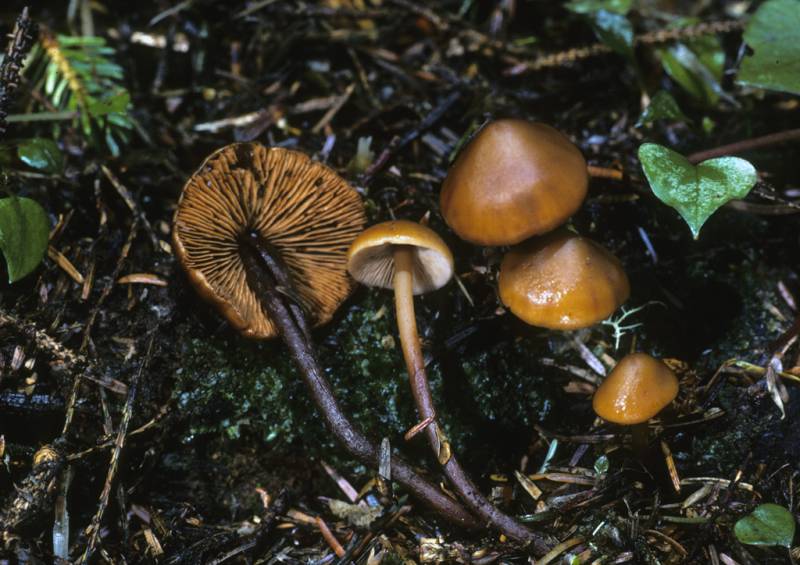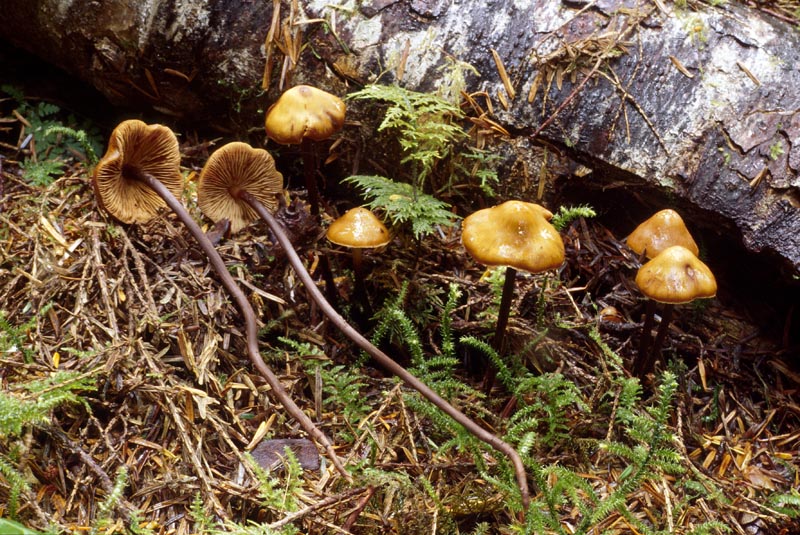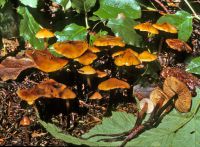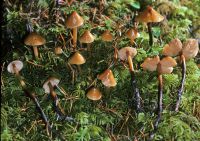Distribution: P. attenuata is apparently restricted to the Pacific Coast, being most abundant from B.C. to central Oregon and less abundant in southern Oregon and northern California.
Habitat: P. attenuata often occurs in large troops, especially in lower-elevation spruce-rich forests.
Conservation Status: Not of concern
Phaeocollybia attenuata is one of the smaller phaeocollybias and, at first glance, the small conical caps might be mistaken for a mycena or galerina. However, the extremely long slender stipe and the relatively tough fleshy cap with no sign of translucent-striation clearly identify it as a phaeocollybia. The cap is orangeish brown to tawny when young and darkens with age; the surface is smooth and moist to viscid. It has a distinctive odor said by Lorelei Norvell to be a combination of potato, pansy, and burnt hair. The stipe is very slender at the apex and thins to a hair-like “root” which is tough and pliable; it is smooth and dark-colored, from brownish above to black below. The spores are somewhat lemon-shaped, distinctly roughened, and 7--9 µm long; the cheilocystidia are thin-walled and club-shaped; clamp connections are absent.
PNW Herbaria: Specimen records of Phaeocollybia attenuata in the Consortium of Pacific Northwest Herbaria database
CalPhotos: Phaeocollybia attenuata photos







